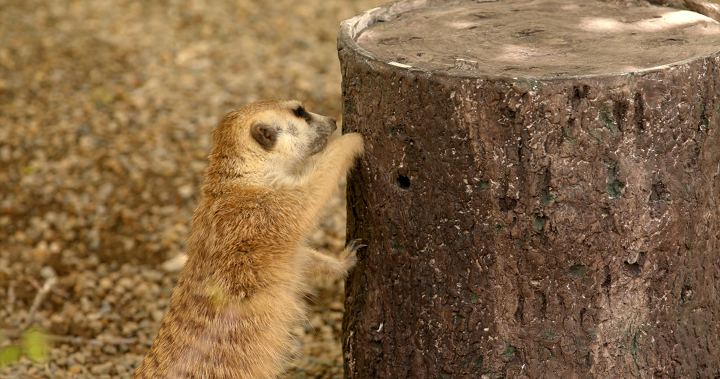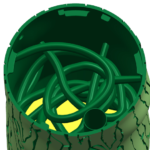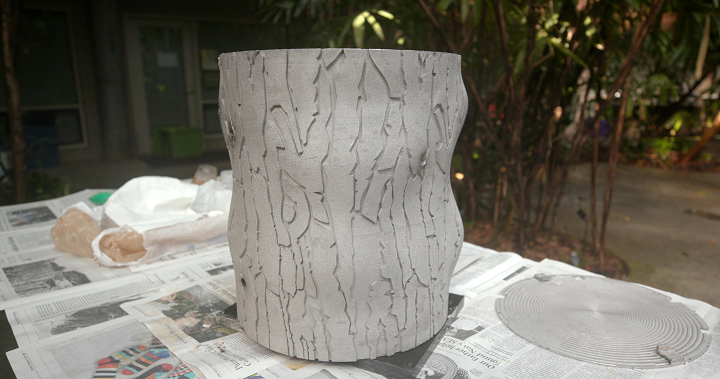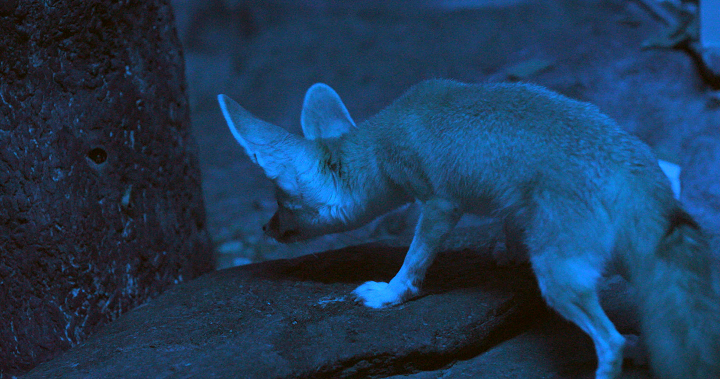3D printing is often used to study animals and their behavior, and even help fix their various medical issues. Now, the Cincinnati Zoo & Botanical Garden is partnering with GE Additive’s AddWorks consulting team, also in Cincinnati, to enhance the daily lives of the zoo inhabitants. Located an hour south of my Dayton home, the zoo houses 2,000 animals, and its quest to give every single one the best care possible led it to 3D printing.
David Orban, the zoo’s animal excellence manager, is in charge of an important team which observes the animals and documents how they spend their days and interact, both with each other and their environment. Then, they use the collected data to gain a deeper understanding of the animals’ zoo experience, and determine ways to enhance it through habitat design, diet, and enrichment.
Orban explained, “Something that we often think about is how to mimic natural feeding behaviors in the animals that we care for. In the wild, animals are adapted to find, acquire, and process food – and it’s not always easy! In human care though, food is always available and of good quality and balance, and in many cases, it’s consumed quite quickly.
“For example, one challenge that we often see when we offer live insects to some of our birds or small mammals is that they are captured and consumed in a matter of five to ten minutes. We’ve had the idea to create a more complex feeder that will extend foraging duration, in turn, extending animals’ physical activity and mental stimulation, leading to more naturally behaving wildlife.”
To help its animals maintain their natural foraging behaviors, the zoo collaborated with AddWorks on this interesting pro bono project.
“To kick things off, the Zoo team showed us around and explained their goal to keep animals engaged and enriched,” stated GE Additive’s lead engineer Shannon Jagodinski.
- CAD models
- (Photos: GE Additive)
AddWorks used the zoo’s collected data to form a plan on how to increase the animals’ foraging experience through the use of metal 3D printing. This wasn’t easy, since zoologists and engineers don’t always speak the same language, but AddWorks has experience with unique projects that take advantage of all additive manufacturing has to offer.
“Additive technology allows a design to incorporate any shape, angle, structure or texture that is needed, with metal or plastic,” said Jagodinski. “The first thing that we considered was safety for the animals, keepers, and visitors and then the Zoo’s request that the animal enrichment device look natural within the environment.”
The zoo collected ideas for the feeder from the animal care staff, and the engineers evaluated them to see if the designs were feasible in terms of part orientation, build plate, powder removal, and other parameters. AddWorks came up with two design ideas, and the zoo staff picked the one they thought would, according to a press release, “provide the biggest benefit to the broadest group of animals.”
The device’s exterior has a bark-like texture, resembling a tree trunk, and the interior features an enclosure that houses crickets. This is connected to tubes of various lengths, which feed out of the device at different points. Depending on the tube it chooses, the cricket takes a longer or shorter time to leave the feeder – providing tasty insect snacks to zoo animals at random times.
“After this feeder concept was selected, my initial questions were ‘how big is a cricket and what size tube do they need to crawl through?’ We got some feedback from the Zoo’s insect team and tried three different tube sizes,” explained Jagodinski. “We printed prototype tubes with three different diameters and tested them in a cricket enclosure at the zoo to see which size worked best.”
The feeder provides the animals a more lifelike feeding experience by distributing food into their habitats at different times – like they would see in the wild – and removing the keepers from the experience.
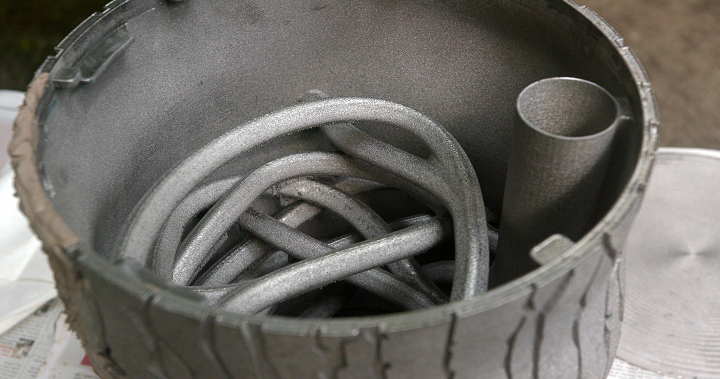
Inside the metal 3D printed cricket feeder, installed at the Discovery Rainforest at Cincinnati Zoo. (Photo: GE Additive)
“I’m excited to be able to go to the zoo with my family and friends and to point into a habitat and say hey I worked on that, that’s a titanium additive part, and that was created using 3D printing technology,” Jagodinski said.
Sadly, that visit will have to wait. AddWorks 3D printed the first part of the device earlier this year out of recycled titanium powder, and delivered a completed version to the zoo in the nick of time, right before the pandemic forced zoos all around the world to temporarily close their gates. But, due to the ongoing COVID-19 crisis, the zookeepers have had plenty of time to test out the 3D printed feeder, first with birds and then with small mammals, like meerkats.
“We have seen that foraging time and the animals’ investigation and interaction last for up to a few hours in our tests compared to a few minutes, which is really exciting for us because that means we can utilize it multiple times a day and in different habitats,” explained Orban. “We have really seen that a lot of animals have been interested in it and continue to stay interested in it, which is exactly what we wanted.”
GE Additive will eventually deliver more of the metal 3D printed devices to the zoo, including a demo piece that will be used to educate visitors about 3D printing and animal enrichment. This device will have part of the exterior removed so that the intricate cricket passageways are visible.
“If there’s one thing I continue to learn with additive is that every customer has their own unique challenges,” stated Dave Chapin, leader of the AddWorks consulting team. “It is amazing to see the positive impact that this unique partnership has had for the animals.”
Discuss this and other 3D printing topics at 3DPrintBoard.com or share your thoughts below.
Subscribe to Our Email Newsletter
Stay up-to-date on all the latest news from the 3D printing industry and receive information and offers from third party vendors.
You May Also Like
Gorilla Sports GE’s First 3D Printed Titanium Cast
How do you help a gorilla with a broken arm? Sounds like the start of a bad joke a zookeeper might tell, but it’s an actual dilemma recently faced by...
Nylon 3D Printed Parts Made More Functional with Coatings & Colors
Parts 3D printed from polyamide (PA, Nylon) 12 using powder bed fusion (PBF) are a mainstay in the additive manufacturing (AM) industry. While post-finishing processes have improved the porosity of...
$25M to Back Sintavia’s Largest Expansion of Metal 3D Printing Capacity Since 2019
Sintavia, the digital manufacturing company specializing in mission-critical parts for strategic sectors, announced a $25 million investment to increase its production capacity, the largest expansion to its operations since 2019....
Velo3D Initiates Public Offering in a Bid to Strengthen Financial Foundations and Drive Future Growth
Velo3D (NYSE: VLD) has been among a number of publicly traded 3D printing firms that have attempted to weather the current macroeconomic climate. After posting a challenging financial report for 2023,...


